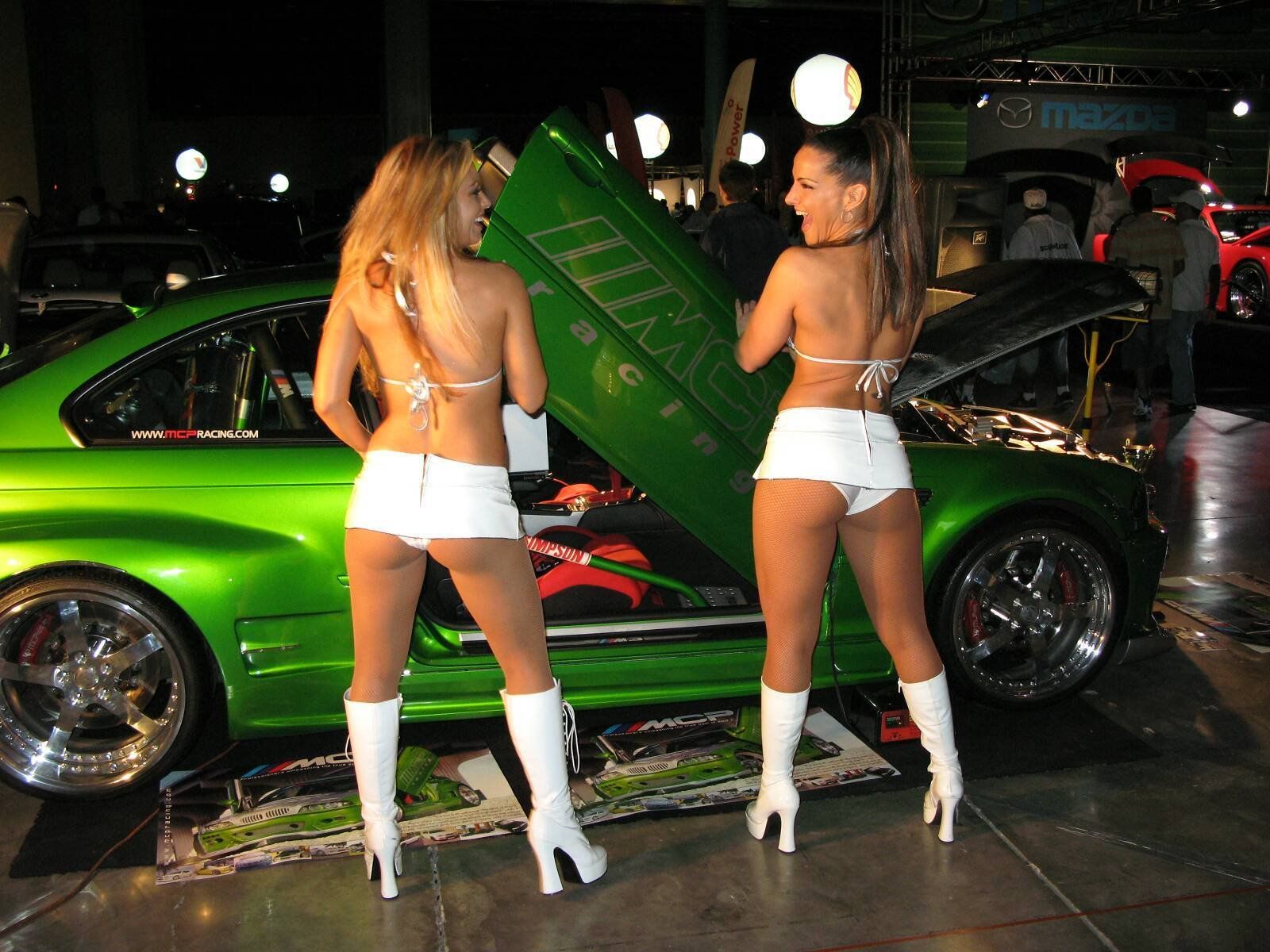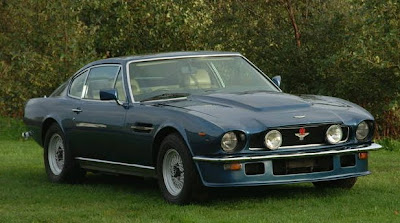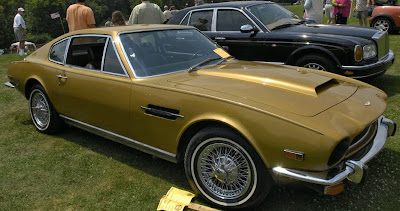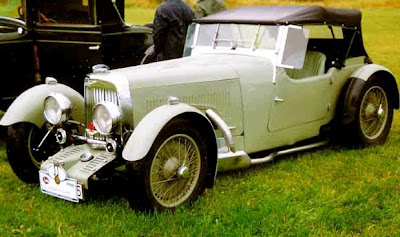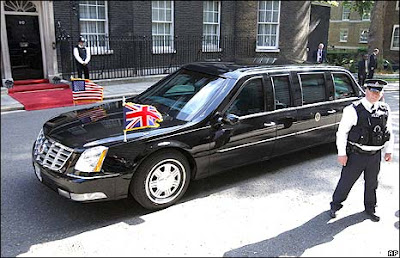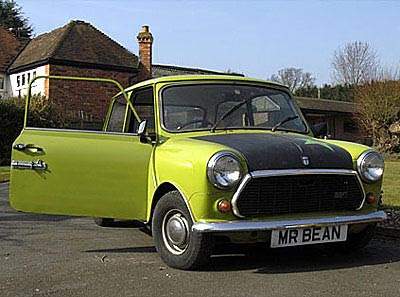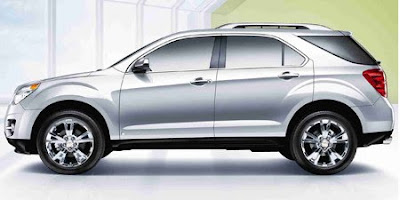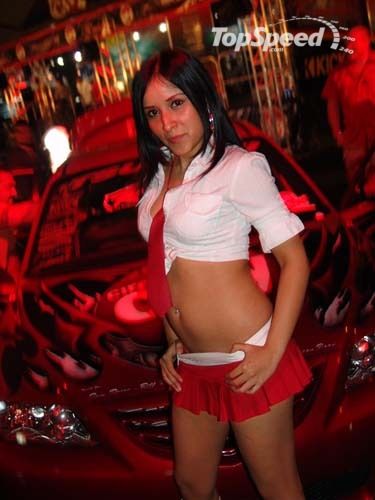|
|
|---|
Monday, August 31, 2009
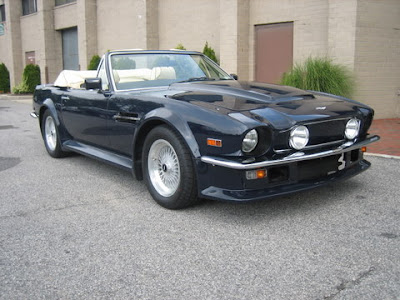
Aston Martin has developed a new luxury commuter concept; the Aston Martin Cygnet Concept which will offer customers a distinctive, intelligent and exclusive solution for urban travel in style and luxury. The concept will offer Aston Martin trademark design in a commuter car package based on the critically acclaimed Toyota iQ with a Euro NCAP 5-star safety package. The Aston Martin Cygnet Concept represents a creative, environmentally conscious solution, being small, yet with presence - and highly fuel efficient, now combined with the prestige of Aston Martin's luxury brand ownership. Aston Martin, the world leader in exclusive niche engineering is collaborating on this concept with Toyota the world leader in volume, quality and reliability. Although vastly different in size, Toyota and Aston Martin share the philosophy of engineering excellence and innovation underlined by a strong passion for cars. Aston Martin Chief Executive, Dr Ulrich Bez said: "Now is the right time for Aston Martin to take this first bold step to embark on this special project - made possible with the support of an organisation of Toyota's stature and capability and the intelligent design and perfect city car package of the iQ." "Much work is still required, but I am confident that this project could become reality in the not too distant future. This concept - akin to an exclusive tender to a luxury yacht - will allow us to apply Aston Martin design language, craftsmanship and brand values to a completely new segment of the market." "The offering of a Aston Martin Cygnet with a DBS, DB9 or Vantage is a unique combination of opposites and a novel transport solution allowing intelligent and sensitive mobility on an exclusive and innovative level."
Labels: Aston Martin, Concept Cars, engine, luxury cars pics, vantage
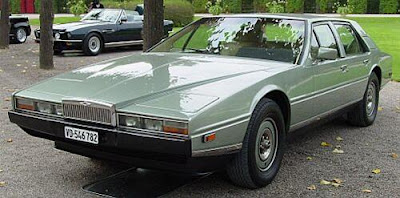
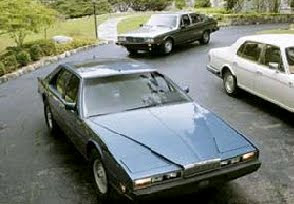 Robin Leach took to the airwaves that year for a peek into "The Lifestyles of the Rich and Famous," and if he'd smarmed his celebrity subjects into walking him through their garages, we'd have encountered cars like these three supersedans on a weekly basis. Each was as absurdly overpriced as any of the other trappings of luxury featured on the show. The Maserati Quattroporte was the bargain of the lot, starting in the mid-$60,000 range (double these figures for today's dollars), next came the Bentley Mulsanne at about $110,000, and the Aston Martin Lagonda rang the bell at $150,000. An average of 20 Lagondas per year arrived in the U.S., only 30 Bentleys were imported each year, and Quattroporte sales here tallied just over 150 annually in the mid-1980s.
Robin Leach took to the airwaves that year for a peek into "The Lifestyles of the Rich and Famous," and if he'd smarmed his celebrity subjects into walking him through their garages, we'd have encountered cars like these three supersedans on a weekly basis. Each was as absurdly overpriced as any of the other trappings of luxury featured on the show. The Maserati Quattroporte was the bargain of the lot, starting in the mid-$60,000 range (double these figures for today's dollars), next came the Bentley Mulsanne at about $110,000, and the Aston Martin Lagonda rang the bell at $150,000. An average of 20 Lagondas per year arrived in the U.S., only 30 Bentleys were imported each year, and Quattroporte sales here tallied just over 150 annually in the mid-1980s.
Labels: Aston Martin, Car Prices, luxury cars pics, Wallpapers
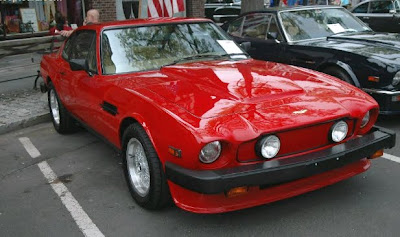 The V8 Vantage has a 0-60 time of just 5.3 seconds, Hard to beat, even today, almost 30 years later. This particular ‘factory’ Vantage was first registered in May 1984 and has an odometer reading of just 45,330 (believed to be genuine based on MOT history). Presented in stunning Jubilee Silver with red hide interior & red carpets, all in excellent order. Fitted with brand new ‘Ronal’ alloy wheels & tyres, it also comes with an Alpine Hi-Fi & CD stacker fitted in the last 12 months. This car has been owned and cherished by a true enthusiast of late, and it drives & handles just as a Vantage should.
The V8 Vantage has a 0-60 time of just 5.3 seconds, Hard to beat, even today, almost 30 years later. This particular ‘factory’ Vantage was first registered in May 1984 and has an odometer reading of just 45,330 (believed to be genuine based on MOT history). Presented in stunning Jubilee Silver with red hide interior & red carpets, all in excellent order. Fitted with brand new ‘Ronal’ alloy wheels & tyres, it also comes with an Alpine Hi-Fi & CD stacker fitted in the last 12 months. This car has been owned and cherished by a true enthusiast of late, and it drives & handles just as a Vantage should.
Labels: Aston Martin, vantage, Wallpapers, wheel
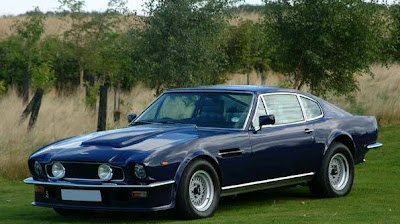 The Aston Martin V8 was produced from 1969 through 1990 and was, of course, powered by an eight-cylinder engine. For many years eager customers had been pleading with Aston Martin to produce an eight-cylinder car. Expected to be completed by 1967, the engine took a few more years of development before being ready. In the mean-time, Aston Martin introduced the DBS which borrowed its Vantage six-cylinder engine from the DB6. In the 1987 film 'The Living Daylights', famous British Secret Agent James Bond could be seen on the big screen driving around in his V8 Vantage Volante. A few years earlier Roger Moore had driven a DBS V8 in the movie 'The Persuaders.' His car was built to resemble the V8 version but actually powered by a six-cylinder engine. In 1969 the eight-cylinder engine was ready and successfully adapted to the DBS. The engine had been designed by Aston Martin's head engineer, Tadek Marek. The engine had made an appearance in the Lola T70 LeMans racer but was more of learning and testing experience than a true success. The DBS was now available with either the six- or eight-cylinder engine, with the eight-cylinder version being the more popular. Over the years the 5.3 liter V8 used fitted with either Bosch fuel injection or carburetors, double overhead camshafts and was capable of producing around 300-315 horsepower. Zero-to-sixty took a mere 5.9 seconds with top speed being achieved at 160 mph. The square-grille, four headlights, and large front air dam was the traditional Aston Martin persona. Gone were the wire wheels. By 1972 the DBS V8 became the Aston Martin V8; since the six-cylinder DBS was no longer offered. This left the V8 and the Vantage as Aston Martins entire model line. In 1972 Aston Martin offered the Series II which incorporated minor visual and mechanical changes. The front featured a mesh grille with twin quart headlights while under the hood the engine was given a little extra tuning. Production of the Series II continued until 1973 with just over 285 examples being produced. After the Series II came the Series III which incorporated four twin-choke Weber carburetors and a larger hood scoop. The 310 horsepower engine took the car from zero-to-sixty in 5.7 seconds, when equipped with the manual transmission. Soon strict emission and government regulations sent the performance tumbling. A new exhaust and camshaft helped boost power a little but was still down by about 10 horsepower. The Series III continued production from 1973 through 1978 except for 1975 when production was temporarily halted. In total over 965 examples were produced. Production had ceased in 1975 due to financial difficulties. A take-over from a consortium in 1975 meant the company could continue producing vehicles. It was decided that instead of creating new models which often consumes large amounts of capital, the company would focus their attention and abilities on fine-tuning the products already in production. At the Birmingham International Motor Show in 1978, Aston Martin introduced the Series IV, also known as the 'Oscar India.' The hood scoop was replaced with a bulge, and a spoiler could now be found on the rear. On the interior could be found wood trim, not seen on an Aston Martin since the DB2/4 of the 1950's. Most were equipped with Chrysler's Torqueflite 3-speed automatic gearbox. Production continued from 1978 through 1985 with a total of 291 examples being produced. 1978 also saw the introduction of the V8 Volante which was a convertible. Though the United States had strict rules concerning safety and convertibles, many of the 650 Volantes produced during the 12 year period made their way State-side. In 1985 a partnership was formed with the famous Italian coachbuilder Zagato to build a limited edition Zagato bodied version of the V8 Vantage. Sketches were shown to the public at the 1985 Geneva Motorshow with the production version making an appearance a year later. These cars were lighter and smaller with an estimated top speed of around 300 km/h. Though production was limited to only 50 examples, demand was much higher. Even before the cars were produced, the money had already been collected from buyers and the original sticker price had even seen escalation due to the popularity. Planning always takes a back seat to reality. The car was estimated to have a top speed of 300 km/h but when testing began, the engine proved inadequate to meet the goal. The fuel injection system was replaced with Weber carburetors but this caused a new problem. The hood needed to be enlarged to house the cabs resulting in a design that was not aesthetically pleasing to many customers. The 'double bubble' roof was Zagato's signature trademark. The aerodynamic body was shorter than its counterpart and weighed 10% less. Handling was considerable better as was the overall performance. Since the Aston Martin V8 Vantage Zagato was produced in limited numbers many investors purchased the vehicles in hopes of turning a profit. Though the designs are very elegant, the true strength of the car was in its performance; sadly many have not been given the opportunity to prove their potential to their owners. At the 1986 New York Auto Show, Aston Martin introduced their fuel-injected Series V. Since there were no bulky carburetors, there was no need for the bulge. Production continued until 1989 with around 61 examples being produced. In 1998 a limited edition version of the Vantage was introduced and dubbed the V600. Outfitted with the 5.3 liter V8 and fitted with dual superchargers, the car was capable of producing an astonishing 600 horsepower. Some of the design cues were taken from the DBR1 LeMans racer that won the 1959 LeMans race. Production was low due to problems with emission regulations. Instead, Aston Martin introduced the V12 Vanquish in 2001. During the production of the Aston Martin V8, it was hailed by many as Britain's 'super car'. It's eight-cylinder engine was a bold move for the small, low production quantity Aston Martin firm. In the end, it was the right decision and one that carried the company for many years. Its performance was legendary and the design was elegant.
The Aston Martin V8 was produced from 1969 through 1990 and was, of course, powered by an eight-cylinder engine. For many years eager customers had been pleading with Aston Martin to produce an eight-cylinder car. Expected to be completed by 1967, the engine took a few more years of development before being ready. In the mean-time, Aston Martin introduced the DBS which borrowed its Vantage six-cylinder engine from the DB6. In the 1987 film 'The Living Daylights', famous British Secret Agent James Bond could be seen on the big screen driving around in his V8 Vantage Volante. A few years earlier Roger Moore had driven a DBS V8 in the movie 'The Persuaders.' His car was built to resemble the V8 version but actually powered by a six-cylinder engine. In 1969 the eight-cylinder engine was ready and successfully adapted to the DBS. The engine had been designed by Aston Martin's head engineer, Tadek Marek. The engine had made an appearance in the Lola T70 LeMans racer but was more of learning and testing experience than a true success. The DBS was now available with either the six- or eight-cylinder engine, with the eight-cylinder version being the more popular. Over the years the 5.3 liter V8 used fitted with either Bosch fuel injection or carburetors, double overhead camshafts and was capable of producing around 300-315 horsepower. Zero-to-sixty took a mere 5.9 seconds with top speed being achieved at 160 mph. The square-grille, four headlights, and large front air dam was the traditional Aston Martin persona. Gone were the wire wheels. By 1972 the DBS V8 became the Aston Martin V8; since the six-cylinder DBS was no longer offered. This left the V8 and the Vantage as Aston Martins entire model line. In 1972 Aston Martin offered the Series II which incorporated minor visual and mechanical changes. The front featured a mesh grille with twin quart headlights while under the hood the engine was given a little extra tuning. Production of the Series II continued until 1973 with just over 285 examples being produced. After the Series II came the Series III which incorporated four twin-choke Weber carburetors and a larger hood scoop. The 310 horsepower engine took the car from zero-to-sixty in 5.7 seconds, when equipped with the manual transmission. Soon strict emission and government regulations sent the performance tumbling. A new exhaust and camshaft helped boost power a little but was still down by about 10 horsepower. The Series III continued production from 1973 through 1978 except for 1975 when production was temporarily halted. In total over 965 examples were produced. Production had ceased in 1975 due to financial difficulties. A take-over from a consortium in 1975 meant the company could continue producing vehicles. It was decided that instead of creating new models which often consumes large amounts of capital, the company would focus their attention and abilities on fine-tuning the products already in production. At the Birmingham International Motor Show in 1978, Aston Martin introduced the Series IV, also known as the 'Oscar India.' The hood scoop was replaced with a bulge, and a spoiler could now be found on the rear. On the interior could be found wood trim, not seen on an Aston Martin since the DB2/4 of the 1950's. Most were equipped with Chrysler's Torqueflite 3-speed automatic gearbox. Production continued from 1978 through 1985 with a total of 291 examples being produced. 1978 also saw the introduction of the V8 Volante which was a convertible. Though the United States had strict rules concerning safety and convertibles, many of the 650 Volantes produced during the 12 year period made their way State-side. In 1985 a partnership was formed with the famous Italian coachbuilder Zagato to build a limited edition Zagato bodied version of the V8 Vantage. Sketches were shown to the public at the 1985 Geneva Motorshow with the production version making an appearance a year later. These cars were lighter and smaller with an estimated top speed of around 300 km/h. Though production was limited to only 50 examples, demand was much higher. Even before the cars were produced, the money had already been collected from buyers and the original sticker price had even seen escalation due to the popularity. Planning always takes a back seat to reality. The car was estimated to have a top speed of 300 km/h but when testing began, the engine proved inadequate to meet the goal. The fuel injection system was replaced with Weber carburetors but this caused a new problem. The hood needed to be enlarged to house the cabs resulting in a design that was not aesthetically pleasing to many customers. The 'double bubble' roof was Zagato's signature trademark. The aerodynamic body was shorter than its counterpart and weighed 10% less. Handling was considerable better as was the overall performance. Since the Aston Martin V8 Vantage Zagato was produced in limited numbers many investors purchased the vehicles in hopes of turning a profit. Though the designs are very elegant, the true strength of the car was in its performance; sadly many have not been given the opportunity to prove their potential to their owners. At the 1986 New York Auto Show, Aston Martin introduced their fuel-injected Series V. Since there were no bulky carburetors, there was no need for the bulge. Production continued until 1989 with around 61 examples being produced. In 1998 a limited edition version of the Vantage was introduced and dubbed the V600. Outfitted with the 5.3 liter V8 and fitted with dual superchargers, the car was capable of producing an astonishing 600 horsepower. Some of the design cues were taken from the DBR1 LeMans racer that won the 1959 LeMans race. Production was low due to problems with emission regulations. Instead, Aston Martin introduced the V12 Vanquish in 2001. During the production of the Aston Martin V8, it was hailed by many as Britain's 'super car'. It's eight-cylinder engine was a bold move for the small, low production quantity Aston Martin firm. In the end, it was the right decision and one that carried the company for many years. Its performance was legendary and the design was elegant.
Labels: Aston Martin, auto, Auto show, Car Prices, convertible, edition, engine, Ferrai italia, motor, motor show, Need for speed, roadster, Series, speed, super, vantage, Vechicles, wheel, zagato
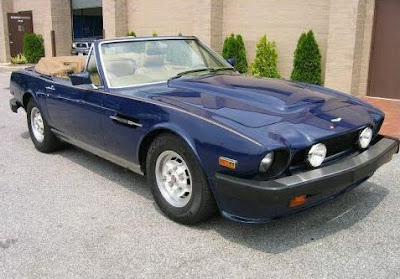 Aston Martin V8 Volante automatic transmission with new engine redone in the Vantage specifications with a cubic capacity of 6 litres. This V540 Cabriolet was delivered new to the USA and subsequently imported to Germany. The current owner bought it from the previous German owner, a pensioner who only used his Aston Martin to drive to the Golf course. The current owner, used to Italian sports cars with superior performance, wasn’t satisfied with the performance and therefore made the decision to have the engine entirely redone by a renowned specialist in the South-west of France. The goal was to obtain an engine performance comparable or superior to the Vantage version and this was surpassed: the estimated power in the present configuration is 400 BHP. The engine was re-bored to 6 litres, new pistons, valves, distributor head bushing etc. The carburettors are new as is the exhaust manifold, the brakes, the steering rack and the tires. The automatic gearbox was revised entirely and adapted to the new engine performance in the UK. Invoices totalling over 25,000 Euros for the mechanical work are available. The car is still being run-in with only 700 km covered since completion of the engine work. Consequently the mechanics are perfect and the cosmetic condition of the car is good. There are no visible traces of corrosion, and we noticed no faults except for a minuscule scratch on the left rear wing. The chromes are also in very good condition. The Vantage BBS rims are new, and a POW front spoiler was fitted. The interior is in a good state of conservation. The carpets deserve a complete cleaning and the leather only needs an appropriate treatment to regain their lustre. The woodwork is very nice. This is a superb car with a performance superior to the original Vantage. The stainless steel exhaust has a great sound and it is sensational to profit from the marriage of such performance with the legendary comfort of the Aston Martin.
Aston Martin V8 Volante automatic transmission with new engine redone in the Vantage specifications with a cubic capacity of 6 litres. This V540 Cabriolet was delivered new to the USA and subsequently imported to Germany. The current owner bought it from the previous German owner, a pensioner who only used his Aston Martin to drive to the Golf course. The current owner, used to Italian sports cars with superior performance, wasn’t satisfied with the performance and therefore made the decision to have the engine entirely redone by a renowned specialist in the South-west of France. The goal was to obtain an engine performance comparable or superior to the Vantage version and this was surpassed: the estimated power in the present configuration is 400 BHP. The engine was re-bored to 6 litres, new pistons, valves, distributor head bushing etc. The carburettors are new as is the exhaust manifold, the brakes, the steering rack and the tires. The automatic gearbox was revised entirely and adapted to the new engine performance in the UK. Invoices totalling over 25,000 Euros for the mechanical work are available. The car is still being run-in with only 700 km covered since completion of the engine work. Consequently the mechanics are perfect and the cosmetic condition of the car is good. There are no visible traces of corrosion, and we noticed no faults except for a minuscule scratch on the left rear wing. The chromes are also in very good condition. The Vantage BBS rims are new, and a POW front spoiler was fitted. The interior is in a good state of conservation. The carpets deserve a complete cleaning and the leather only needs an appropriate treatment to regain their lustre. The woodwork is very nice. This is a superb car with a performance superior to the original Vantage. The stainless steel exhaust has a great sound and it is sensational to profit from the marriage of such performance with the legendary comfort of the Aston Martin.
Labels: Aston Martin, auto, engine, Ferrai italia, Specifications, vantage, Wallpapers
 In October of 1976 Aston Martin introduced the four-door Lagonda at the Earl's Court Show. The name Lagonda was borrowed from a similar British marque that had a respectable racing tradition and produced low production, exclusive automobiles. Both Aston Martin and Lagonda also shared a similar history of financial difficulties. After World War II, David Brown took control of both Aston Martin and Lagonda and brought these honorable marques under one name. In 1959, the combination was able to capture the World Championship. The Aston Martin Lagonda was designed by William Towns. It was modern and practical with seating for five and many creature comforts. Production began in 1976 and continued untili 1990 with 645 examples being created. It was the first production automobile in the world to use a digital instrument panel and computer management. Under the hood was a four-cam eight-cylinder engine in 'Vee' configuration. A Chrysler 3-speed TorqueFlite automatic transmission sent the power to the rear wheels. Air conditioning, power steering, brakes windows, door locks and a sunroof were all standard equipment.
In October of 1976 Aston Martin introduced the four-door Lagonda at the Earl's Court Show. The name Lagonda was borrowed from a similar British marque that had a respectable racing tradition and produced low production, exclusive automobiles. Both Aston Martin and Lagonda also shared a similar history of financial difficulties. After World War II, David Brown took control of both Aston Martin and Lagonda and brought these honorable marques under one name. In 1959, the combination was able to capture the World Championship. The Aston Martin Lagonda was designed by William Towns. It was modern and practical with seating for five and many creature comforts. Production began in 1976 and continued untili 1990 with 645 examples being created. It was the first production automobile in the world to use a digital instrument panel and computer management. Under the hood was a four-cam eight-cylinder engine in 'Vee' configuration. A Chrysler 3-speed TorqueFlite automatic transmission sent the power to the rear wheels. Air conditioning, power steering, brakes windows, door locks and a sunroof were all standard equipment.
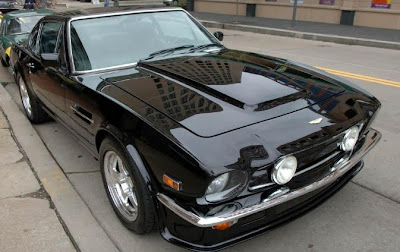 The Aston Martin DBS V8 was announced, production commencing the following April. With its four overhead camshafts and Bosch electronic fuel] injection, the 5,340cc V8 produced an impressive 320bhp at 5,000rpm and 3601b ft; the resultant 160mph plus performance was nothing short of staggering in 1970. After David Brown sold Aston Martin in February 1972 the DBS V8 was replaced by the Series 2 model, now simply called the Aston Martin V8. Gone were the four headlamps and slatted grille, in their place a black mesh grille flanked by single headlamps; mechanical changes were limited to electronic ignition and standard air conditioning. August 1973 saw the Series 3 arrive with quadruple Weber carburettors, larger bonnet bulge, improved seats and central locking; power rose to 304bhp in June 1977. Later that year, the mighty V8 Vantage was launched boasting special camshafts, larger valves and Weber IDA carburettors; with 380bhp at 6,000rpm. It provided 0-60 and 0-100mph in 5.3 and 12.7 seconds respectively and a 170mph maximum. The latter necessitated some aerodynamic aids and the V8 Vantage thus sported a deep front air dam, bolt-on boot spoiler, blanked off radiator grille, Perspex headlamp covers and bonnet air scoop. Suspension was also stiffened with Koni dampers fitted and tyres widened. Showing a believed genuine 67,000 miles, this Oscar India boasts an Aston Martin specialist service history from 1990 (53,000 miles) to present, including a full engine rebuild at 65,000 miles. In 1995 the car changed hands to the forth owner who dry-stored the car, only using it to service and MOT. In 2000 the car was registered as SORN and dry-stored until the sale to the current owner in 2008 who commissioned a full chassis refurbishment by Aston Martin Specialist Marks Danes Ltd. This included the stripping of all under seals to bare metal and the outer seals jacking points, outriggers and trailing arms replaced as required. The rear suspension was removed and rebuilt replacing any worn parts and new bushes were fitted. In addition, the rear brake system was overhauled and the wheels were professionally refurbished with new Avon tyres fitted. These sympathetic improvements totalled £15,000. Subsequently, chassis number V8SOR12325 was treated to a full engine service and tuning, replacing all auxiliary components at a cost of £3000 in 2008 by Sigma Engineering. Complete with full stainless steel exhaust system, a photographic record of all works carried out, current MOT, owners manual and original Aston Martin warranty, the current owner describes the car as in excellent all-round condition and as driving without fault. Showing the appropriate oil pressure of 80 pounds at 3000 RPM, this car offers the new owner years of enjoyment that only a correctly sorted V8 can offer.
The Aston Martin DBS V8 was announced, production commencing the following April. With its four overhead camshafts and Bosch electronic fuel] injection, the 5,340cc V8 produced an impressive 320bhp at 5,000rpm and 3601b ft; the resultant 160mph plus performance was nothing short of staggering in 1970. After David Brown sold Aston Martin in February 1972 the DBS V8 was replaced by the Series 2 model, now simply called the Aston Martin V8. Gone were the four headlamps and slatted grille, in their place a black mesh grille flanked by single headlamps; mechanical changes were limited to electronic ignition and standard air conditioning. August 1973 saw the Series 3 arrive with quadruple Weber carburettors, larger bonnet bulge, improved seats and central locking; power rose to 304bhp in June 1977. Later that year, the mighty V8 Vantage was launched boasting special camshafts, larger valves and Weber IDA carburettors; with 380bhp at 6,000rpm. It provided 0-60 and 0-100mph in 5.3 and 12.7 seconds respectively and a 170mph maximum. The latter necessitated some aerodynamic aids and the V8 Vantage thus sported a deep front air dam, bolt-on boot spoiler, blanked off radiator grille, Perspex headlamp covers and bonnet air scoop. Suspension was also stiffened with Koni dampers fitted and tyres widened. Showing a believed genuine 67,000 miles, this Oscar India boasts an Aston Martin specialist service history from 1990 (53,000 miles) to present, including a full engine rebuild at 65,000 miles. In 1995 the car changed hands to the forth owner who dry-stored the car, only using it to service and MOT. In 2000 the car was registered as SORN and dry-stored until the sale to the current owner in 2008 who commissioned a full chassis refurbishment by Aston Martin Specialist Marks Danes Ltd. This included the stripping of all under seals to bare metal and the outer seals jacking points, outriggers and trailing arms replaced as required. The rear suspension was removed and rebuilt replacing any worn parts and new bushes were fitted. In addition, the rear brake system was overhauled and the wheels were professionally refurbished with new Avon tyres fitted. These sympathetic improvements totalled £15,000. Subsequently, chassis number V8SOR12325 was treated to a full engine service and tuning, replacing all auxiliary components at a cost of £3000 in 2008 by Sigma Engineering. Complete with full stainless steel exhaust system, a photographic record of all works carried out, current MOT, owners manual and original Aston Martin warranty, the current owner describes the car as in excellent all-round condition and as driving without fault. Showing the appropriate oil pressure of 80 pounds at 3000 RPM, this car offers the new owner years of enjoyment that only a correctly sorted V8 can offer.
Labels: Aston Martin, engine, Series, vantage, Wallpapers, wheel
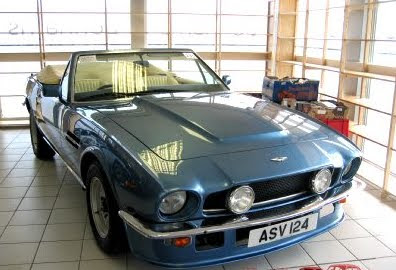 This 1980 Aston Martin Volante Convertible is one of only 39 convertibles sold in the United States in 1980, with a grand total of just 203 examples built in 1980 of all body styles. This car has been in storage for many years and traveled just 31,000 miles since new. It retains its original red exterior color and black leather interior with black top with linger. It has a 326 cubic-inch Lagonda Hemi V8 engine that displaces 5.3 liters and produces an impressive 350 horsepower. Top speed is achieved at 145 mph. It is loaded with options including power windows, power locks, and power steering.
This 1980 Aston Martin Volante Convertible is one of only 39 convertibles sold in the United States in 1980, with a grand total of just 203 examples built in 1980 of all body styles. This car has been in storage for many years and traveled just 31,000 miles since new. It retains its original red exterior color and black leather interior with black top with linger. It has a 326 cubic-inch Lagonda Hemi V8 engine that displaces 5.3 liters and produces an impressive 350 horsepower. Top speed is achieved at 145 mph. It is loaded with options including power windows, power locks, and power steering.
Labels: Aston Martin, convertible, engine, speed, Wallpapers
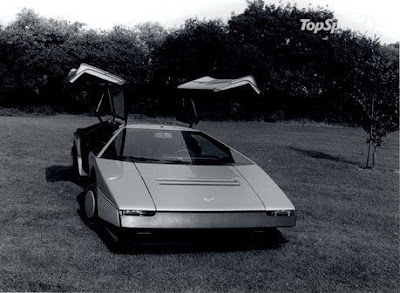
 The Aston Martin Bulldog, styled by William Towns, was a one-off testbed vehicle produced by Aston Martin in 1979. Originally, it had been intended to be a limited run of about 25. This aston martin Bulldog powered by a twin Garrett AirResearch turbocharged 5.3 litre V8 originally with Bosch Fuel Injection. Power output on the test bed reached in excess of 700 bhp, although installed in the car this would have been in the region of 650 bhp. Whilst designed to exceed 200 mph, at the time, a maximum speed of 192 mph was recorded.
The Aston Martin Bulldog, styled by William Towns, was a one-off testbed vehicle produced by Aston Martin in 1979. Originally, it had been intended to be a limited run of about 25. This aston martin Bulldog powered by a twin Garrett AirResearch turbocharged 5.3 litre V8 originally with Bosch Fuel Injection. Power output on the test bed reached in excess of 700 bhp, although installed in the car this would have been in the region of 650 bhp. Whilst designed to exceed 200 mph, at the time, a maximum speed of 192 mph was recorded.
Labels: Aston Martin, speed, Wallpapers
Labels: Aston Martin, Wallpapers
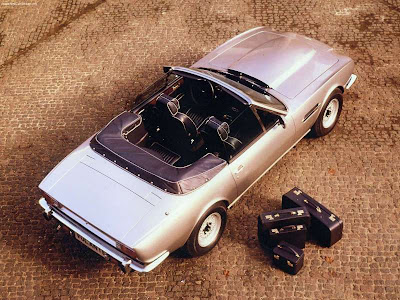 The V8 Volante announced on 21st June 1978, was therefore assured a warm welcome. Its specification follows the contemporary V8 saloon, but was ahead in having polished burr walnut trim and a re-designed bonnet. The hood was power operated as before and was fully lined for noise insulation.
The V8 Volante announced on 21st June 1978, was therefore assured a warm welcome. Its specification follows the contemporary V8 saloon, but was ahead in having polished burr walnut trim and a re-designed bonnet. The hood was power operated as before and was fully lined for noise insulation.
Labels: Aston Martin, Wallpapers
Labels: Aston Martin, Wallpapers
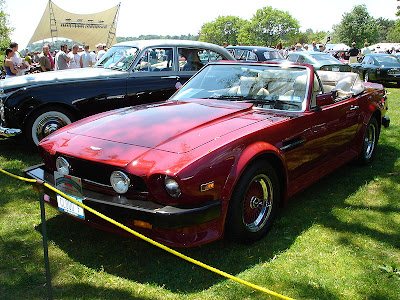 The Aston Martin V8 Vantage was hailed at its 1977 introduction as "Britain's First Supercar" for its 170 mph (274 km/h) top speed. Its engine was shared with the Lagonda, but it used high-performance camshafts, increased compression ratio, larger inlet valves and bigger carburettors mounted on new manifolds for increased output. Straight-line performance was the best of the day, with acceleration from 0–60 mph (0–100 km/h) in 5.3 seconds, one-tenth of a second quicker than the Ferrari Daytona.
The Aston Martin V8 Vantage was hailed at its 1977 introduction as "Britain's First Supercar" for its 170 mph (274 km/h) top speed. Its engine was shared with the Lagonda, but it used high-performance camshafts, increased compression ratio, larger inlet valves and bigger carburettors mounted on new manifolds for increased output. Straight-line performance was the best of the day, with acceleration from 0–60 mph (0–100 km/h) in 5.3 seconds, one-tenth of a second quicker than the Ferrari Daytona.
Labels: Aston Martin, engine, speed, vantage, Wallpapers
The Aston Martin V8 was produced from 1969 through 1990 and was, of course, powered by an eight-cylinder engine. For many years eager customers had been pleading with Aston Martin to produce an eight-cylinder car. Expected to be completed by 1967, the engine took a few more years of development before being ready. In the mean-time, Aston Martin introduced the DBS which borrowed its Vantage six-cylinder engine from the DB6.
In the 1987 film 'The Living Daylights', famous British Secret Agent James Bond could be seen on the big screen driving around in his V8 Vantage Volante. A few years earlier Roger Moore had driven a DBS V8 in the movie 'The Persuaders.' His car was built to resemble the V8 version but actually powered by a six-cylinder engine.
In 1969 the eight-cylinder engine was ready and successfully adapted to the DBS. The engine had been designed by Aston Martin's head engineer, Tadek Marek. The engine had made an appearance in the Lola T70 LeMans racer but was more of learning and testing experience than a true success. The DBS was now available with either the six- or eight-cylinder engine, with the eight-cylinder version being the more popular. Over the years the 5.3 liter V8 used fitted with either Bosch fuel injection or carburetors, double overhead camshafts and was capable of producing around 300-315 horsepower. Zero-to-sixty took a mere 5.9 seconds with top speed being achieved at 160 mph.
The square-grille, four headlights, and large front air dam was the traditional Aston Martin persona. Gone were the wire wheels.
By 1972 the DBS V8 became the Aston Martin V8; since the six-cylinder DBS was no longer offered. This left the V8 and the Vantage as Aston Martins entire model line.
In 1972 Aston Martin offered the Series II which incorporated minor visual and mechanical changes. The front featured a mesh grille with twin quart headlights while under the hood the engine was given a little extra tuning. Production of the Series II continued until 1973 with just over 285 examples being produced. After the Series II came the Series III which incorporated four twin-choke Weber carburetors and a larger hood scoop. The 310 horsepower engine took the car from zero-to-sixty in 5.7 seconds, when equipped with the manual transmission. Soon strict emission and government regulations sent the performance tumbling. A new exhaust and camshaft helped boost power a little but was still down by about 10 horsepower.
The Series III continued production from 1973 through 1978 except for 1975 when production was temporarily halted. In total over 965 examples were produced. Production had ceased in 1975 due to financial difficulties. A take-over from a consortium in 1975 meant the company could continue producing vehicles. It was decided that instead of creating new models which often consumes large amounts of capital, the company would focus their attention and abilities on fine-tuning the products already in production.
At the Birmingham International Motor Show in 1978, Aston Martin introduced the Series IV, also known as the 'Oscar India.' The hood scoop was replaced with a bulge, and a spoiler could now be found on the rear. On the interior could be found wood trim, not seen on an Aston Martin since the DB2/4 of the 1950's. Most were equipped with Chrysler's Torqueflite 3-speed automatic gearbox. Production continued from 1978 through 1985 with a total of 291 examples being produced.
1978 also saw the introduction of the V8 Volante which was a convertible. Though the United States had strict rules concerning safety and convertibles, many of the 650 Volantes produced during the 12 year period made their way State-side.
In 1985 a partnership was formed with the famous Italian coachbuilder Zagato to build a limited edition Zagato bodied version of the V8 Vantage. Sketches were shown to the public at the 1985 Geneva Motorshow with the production version making an appearance a year later. These cars were lighter and smaller with an estimated top speed of around 300 km/h. Though production was limited to only 50 examples, demand was much higher. Even before the cars were produced, the money had already been collected from buyers and the original sticker price had even seen escalation due to the popularity.
Planning always takes a back seat to reality. The car was estimated to have a top speed of 300 km/h but when testing began, the engine proved inadequate to meet the goal. The fuel injection system was replaced with Weber carburetors but this caused a new problem. The hood needed to be enlarged to house the cabs resulting in a design that was not aesthetically pleasing to many customers.
The 'double bubble' roof was Zagato's signature trademark. The aerodynamic body was shorter than its counterpart and weighed 10% less. Handling was considerable better as was the overall performance.
Since the Aston Martin V8 Vantage Zagato was produced in limited numbers many investors purchased the vehicles in hopes of turning a profit. Though the designs are very elegant, the true strength of the car was in its performance; sadly many have not been given the opportunity to prove their potential to their owners.
At the 1986 New York Auto Show, Aston Martin introduced their fuel-injected Series V. Since there were no bulky carburetors, there was no need for the bulge. Production continued until 1989 with around 61 examples being produced.
In 1998 a limited edition version of the Vantage was introduced and dubbed the V600. Outfitted with the 5.3 liter V8 and fitted with dual superchargers, the car was capable of producing an astonishing 600 horsepower. Some of the design cues were taken from the DBR1 LeMans racer that won the 1959 LeMans race. Production was low due to problems with emission regulations. Instead, Aston Martin introduced the V12 Vanquish in 2001.
During the production of the Aston Martin V8, it was hailed by many as Britain's 'super car'. It's eight-cylinder engine was a bold move for the small, low production quantity Aston Martin firm. In the end, it was the right decision and one that carried the company for many years. Its performance was legendary and the design was elegant.
Labels: Aston Martin, auto, Auto show, Car Prices, convertible, coupe, edition, engine, motor, motor show, Need for speed, roadster, sebring, Series, speed, super, vantage, Vechicles, wheel
Sunday, August 30, 2009
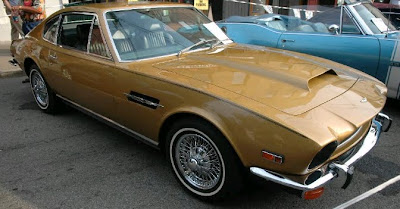 The Series III continued production from 1973 through 1978 except for 1975 when production was temporarily halted. In total over 965 examples were produced. Production had ceased in 1975 due to financial difficulties. A take-over from a consortium in 1975 meant the company could continue producing vehicles. It was decided that instead of creating new models which often consumes large amounts of capital, the company would focus their attention and abilities on fine-tuning the products already in production. At the Birmingham International Motor Show in 1978, Aston Martin introduced the Series IV, also known as the 'Oscar India.' The hood scoop was replaced with a bulge, and a spoiler could now be found on the rear. On the interior could be found wood trim, not seen on an Aston Martin since the DB2/4 of the 1950's. Most were equipped with Chrysler's Torqueflite 3-speed automatic gearbox. Production continued from 1978 through 1985 with a total of 291 examples being produced. 1978 also saw the introduction of the V8 Volante which was a convertible. Though the United States had strict rules concerning safety and convertibles, many of the 650 Volantes produced during the 12 year period made their way State-side. In 1985 a partnership was formed with the famous Italian coachbuilder Zagato to build a limited edition Zagato bodied version of the V8 Vantage. Sketches were shown to the public at the 1985 Geneva Motorshow with the production version making an appearance a year later. These cars were lighter and smaller with an estimated top speed of around 300 km/h. Though production was limited to only 50 examples, demand was much higher. Even before the cars were produced, the money had already been collected from buyers and the original sticker price had even seen escalation due to the popularity. Planning always takes a back seat to reality. The car was estimated to have a top speed of 300 km/h but when testing began, the engine proved inadequate to meet the goal. The fuel injection system was replaced with Weber carburetors but this caused a new problem. The hood needed to be enlarged to house the cabs resulting in a design that was not aesthetically pleasing to many customers. The 'double bubble' roof was Zagato's signature trademark. The aerodynamic body was shorter than its counterpart and weighed 10% less. Handling was considerable better as was the overall performance. Since the Aston Martin V8 Vantage Zagato was produced in limited numbers many investors purchased the vehicles in hopes of turning a profit. Though the designs are very elegant, the true strength of the car was in its performance; sadly many have not been given the opportunity to prove their potential to their owners. At the 1986 New York Auto Show, Aston Martin introduced their fuel-injected Series V. Since there were no bulky carburetors, there was no need for the bulge. Production continued until 1989 with around 61 examples being produced. In 1998 a limited edition version of the Vantage was introduced and dubbed the V600. Outfitted with the 5.3 liter V8 and fitted with dual superchargers, the car was capable of producing an astonishing 600 horsepower. Some of the design cues were taken from the DBR1 LeMans racer that won the 1959 LeMans race. Production was low due to problems with emission regulations. Instead, Aston Martin introduced the V12 Vanquish in 2001. During the production of the Aston Martin V8, it was hailed by many as Britain's 'super car'. It's eight-cylinder engine was a bold move for the small, low production quantity Aston Martin firm. In the end, it was the right decision and one that carried the company for many years. Its performance was legendary and the design was elegant.
The Series III continued production from 1973 through 1978 except for 1975 when production was temporarily halted. In total over 965 examples were produced. Production had ceased in 1975 due to financial difficulties. A take-over from a consortium in 1975 meant the company could continue producing vehicles. It was decided that instead of creating new models which often consumes large amounts of capital, the company would focus their attention and abilities on fine-tuning the products already in production. At the Birmingham International Motor Show in 1978, Aston Martin introduced the Series IV, also known as the 'Oscar India.' The hood scoop was replaced with a bulge, and a spoiler could now be found on the rear. On the interior could be found wood trim, not seen on an Aston Martin since the DB2/4 of the 1950's. Most were equipped with Chrysler's Torqueflite 3-speed automatic gearbox. Production continued from 1978 through 1985 with a total of 291 examples being produced. 1978 also saw the introduction of the V8 Volante which was a convertible. Though the United States had strict rules concerning safety and convertibles, many of the 650 Volantes produced during the 12 year period made their way State-side. In 1985 a partnership was formed with the famous Italian coachbuilder Zagato to build a limited edition Zagato bodied version of the V8 Vantage. Sketches were shown to the public at the 1985 Geneva Motorshow with the production version making an appearance a year later. These cars were lighter and smaller with an estimated top speed of around 300 km/h. Though production was limited to only 50 examples, demand was much higher. Even before the cars were produced, the money had already been collected from buyers and the original sticker price had even seen escalation due to the popularity. Planning always takes a back seat to reality. The car was estimated to have a top speed of 300 km/h but when testing began, the engine proved inadequate to meet the goal. The fuel injection system was replaced with Weber carburetors but this caused a new problem. The hood needed to be enlarged to house the cabs resulting in a design that was not aesthetically pleasing to many customers. The 'double bubble' roof was Zagato's signature trademark. The aerodynamic body was shorter than its counterpart and weighed 10% less. Handling was considerable better as was the overall performance. Since the Aston Martin V8 Vantage Zagato was produced in limited numbers many investors purchased the vehicles in hopes of turning a profit. Though the designs are very elegant, the true strength of the car was in its performance; sadly many have not been given the opportunity to prove their potential to their owners. At the 1986 New York Auto Show, Aston Martin introduced their fuel-injected Series V. Since there were no bulky carburetors, there was no need for the bulge. Production continued until 1989 with around 61 examples being produced. In 1998 a limited edition version of the Vantage was introduced and dubbed the V600. Outfitted with the 5.3 liter V8 and fitted with dual superchargers, the car was capable of producing an astonishing 600 horsepower. Some of the design cues were taken from the DBR1 LeMans racer that won the 1959 LeMans race. Production was low due to problems with emission regulations. Instead, Aston Martin introduced the V12 Vanquish in 2001. During the production of the Aston Martin V8, it was hailed by many as Britain's 'super car'. It's eight-cylinder engine was a bold move for the small, low production quantity Aston Martin firm. In the end, it was the right decision and one that carried the company for many years. Its performance was legendary and the design was elegant.
Labels: Aston Martin, auto, Auto show, Car Prices, convertible, edition, engine, motor, motor show, Need for speed, roadster, Series, speed, super, vantage, Vechicles, zagato
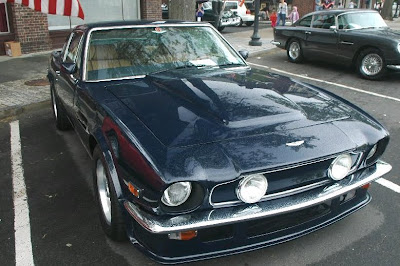 The Aston Martin V8 was produced from 1969 through 1990 and was, of course, powered by an eight-cylinder engine. For many years eager customers had been pleading with Aston Martin to produce an eight-cylinder car. Expected to be completed by 1967, the engine took a few more years of development before being ready. In the mean-time, Aston Martin introduced the DBS which borrowed its Vantage six-cylinder engine from the DB6. In the 1987 film 'The Living Daylights', famous British Secret Agent James Bond could be seen on the big screen driving around in his V8 Vantage Volante. A few years earlier Roger Moore had driven a DBS V8 in the movie 'The Persuaders.' His car was built to resemble the V8 version but actually powered by a six-cylinder engine. In 1969 the eight-cylinder engine was ready and successfully adapted to the DBS. The engine had been designed by Aston Martin head engineer, Tadek Marek. The engine had made an appearance in the Lola T70 LeMans racer but was more of learning and testing experience than a true success. The DBS was now available with either the six- or eight-cylinder engine, with the eight-cylinder version being the more popular. Over the years the 5.3 liter V8 used fitted with either Bosch fuel injection or carburetors, double overhead camshafts and was capable of producing around 300-315 horsepower. Zero-to-sixty took a mere 5.9 seconds with top speed being achieved at 160 mph. The square-grille, four headlights, and large front air dam was the traditional Aston Martin persona. Gone were the wire wheels. By 1972 the DBS V8 became the Aston Martin V8; since the six-cylinder DBS was no longer offered. This left the V8 and the Vantage as Aston Martins entire model line. In 1972 Aston Martin offered the Series II which incorporated minor visual and mechanical changes. The front featured a mesh grille with twin quart headlights while under the hood the engine was given a little extra tuning. Production of the Series II continued until 1973 with just over 285 examples being produced. After the Series II came the Series III which incorporated four twin-choke Weber carburetors and a larger hood scoop. The 310 horsepower engine took the car from zero-to-sixty in 5.7 seconds, when equipped with the manual transmission. Soon strict emission and government regulations sent the performance tumbling. A new exhaust and camshaft helped boost power a little but was still down by about 10 horsepower. The Series III continued production from 1973 through 1978 except for 1975 when production was temporarily halted. In total over 965 examples were produced. Production had ceased in 1975 due to financial difficulties. A take-over from a consortium in 1975 meant the company could continue producing vehicles. It was decided that instead of creating new models which often consumes large amounts of capital, the company would focus their attention and abilities on fine-tuning the products already in production. At the Birmingham International Motor Show in 1978, Aston Martin introduced the Series IV, also known as the 'Oscar India.' The hood scoop was replaced with a bulge, and a spoiler could now be found on the rear. On the interior could be found wood trim, not seen on an Aston Martin since the DB2/4 of the 1950's. Most were equipped with Chrysler's Torqueflite 3-speed automatic gearbox. Production continued from 1978 through 1985 with a total of 291 examples being produced. 1978 also saw the introduction of the V8 Volante which was a convertible. Though the United States had strict rules concerning safety and convertibles, many of the 650 Volantes produced during the 12 year period made their way State-side. In 1985 a partnership was formed with the famous Italian coachbuilder Zagato to build a limited edition Zagato bodied version of the V8 Vantage. Sketches were shown to the public at the 1985 Geneva Motorshow with the production version making an appearance a year later. These cars were lighter and smaller with an estimated top speed of around 300 km/h.Though production was limited to only 50 examples, demand was much higher. Even before the cars were produced, the money had already been collected from buyers and the original sticker price had even seen escalation due to the popularity. Planning always takes a back seat to reality. The car was estimated to have a top speed of 300 km/h but when testing began, the engine proved inadequate to meet the goal. The fuel injection system was replaced with Weber carburetors but this caused a new problem. The hood needed to be enlarged to house the cabs resulting in a design that was not aesthetically pleasing to many customers. The 'double bubble' roof was Zagato's signature trademark. The aerodynamic body was shorter than its counterpart and weighed 10% less. Handling was considerable better as was the overall performance.. Since the Aston Martin V8 Vantage Zagato was produced in limited numbers many investors purchased the vehicles in hopes of turning a profit. Though the designs are very elegant, the true strength of the car was in its performance; sadly many have not been given the opportunity to prove their potential to their owners. At the 1986 New York Auto Show, Aston Martin introduced their fuel-injected Series V. Since there were no bulky carburetors, there was no need for the bulge. Production continued until 1989 with around 61 examples being produced. In 1998 a limited edition version of the Vantage was introduced and dubbed the V600. Outfitted with the 5.3 liter V8 and fitted with dual superchargers, the car was capable of producing an astonishing 600 horsepower. Some of the design cues were taken from the DBR1 LeMans racer that won the 1959 LeMans race. Production was low due to problems with emission regulations. Instead, Aston Martin introduced the V12 Vanquish in 2001. During the production of the Aston Martin V8, it was hailed by many as Britain's 'super car'. It's eight-cylinder engine was a bold move for the small, low production quantity Aston Martin firm. In the end, it was the right decision and one that carried the company for many years. Its performance was legendary and the design was elegant.
The Aston Martin V8 was produced from 1969 through 1990 and was, of course, powered by an eight-cylinder engine. For many years eager customers had been pleading with Aston Martin to produce an eight-cylinder car. Expected to be completed by 1967, the engine took a few more years of development before being ready. In the mean-time, Aston Martin introduced the DBS which borrowed its Vantage six-cylinder engine from the DB6. In the 1987 film 'The Living Daylights', famous British Secret Agent James Bond could be seen on the big screen driving around in his V8 Vantage Volante. A few years earlier Roger Moore had driven a DBS V8 in the movie 'The Persuaders.' His car was built to resemble the V8 version but actually powered by a six-cylinder engine. In 1969 the eight-cylinder engine was ready and successfully adapted to the DBS. The engine had been designed by Aston Martin head engineer, Tadek Marek. The engine had made an appearance in the Lola T70 LeMans racer but was more of learning and testing experience than a true success. The DBS was now available with either the six- or eight-cylinder engine, with the eight-cylinder version being the more popular. Over the years the 5.3 liter V8 used fitted with either Bosch fuel injection or carburetors, double overhead camshafts and was capable of producing around 300-315 horsepower. Zero-to-sixty took a mere 5.9 seconds with top speed being achieved at 160 mph. The square-grille, four headlights, and large front air dam was the traditional Aston Martin persona. Gone were the wire wheels. By 1972 the DBS V8 became the Aston Martin V8; since the six-cylinder DBS was no longer offered. This left the V8 and the Vantage as Aston Martins entire model line. In 1972 Aston Martin offered the Series II which incorporated minor visual and mechanical changes. The front featured a mesh grille with twin quart headlights while under the hood the engine was given a little extra tuning. Production of the Series II continued until 1973 with just over 285 examples being produced. After the Series II came the Series III which incorporated four twin-choke Weber carburetors and a larger hood scoop. The 310 horsepower engine took the car from zero-to-sixty in 5.7 seconds, when equipped with the manual transmission. Soon strict emission and government regulations sent the performance tumbling. A new exhaust and camshaft helped boost power a little but was still down by about 10 horsepower. The Series III continued production from 1973 through 1978 except for 1975 when production was temporarily halted. In total over 965 examples were produced. Production had ceased in 1975 due to financial difficulties. A take-over from a consortium in 1975 meant the company could continue producing vehicles. It was decided that instead of creating new models which often consumes large amounts of capital, the company would focus their attention and abilities on fine-tuning the products already in production. At the Birmingham International Motor Show in 1978, Aston Martin introduced the Series IV, also known as the 'Oscar India.' The hood scoop was replaced with a bulge, and a spoiler could now be found on the rear. On the interior could be found wood trim, not seen on an Aston Martin since the DB2/4 of the 1950's. Most were equipped with Chrysler's Torqueflite 3-speed automatic gearbox. Production continued from 1978 through 1985 with a total of 291 examples being produced. 1978 also saw the introduction of the V8 Volante which was a convertible. Though the United States had strict rules concerning safety and convertibles, many of the 650 Volantes produced during the 12 year period made their way State-side. In 1985 a partnership was formed with the famous Italian coachbuilder Zagato to build a limited edition Zagato bodied version of the V8 Vantage. Sketches were shown to the public at the 1985 Geneva Motorshow with the production version making an appearance a year later. These cars were lighter and smaller with an estimated top speed of around 300 km/h.Though production was limited to only 50 examples, demand was much higher. Even before the cars were produced, the money had already been collected from buyers and the original sticker price had even seen escalation due to the popularity. Planning always takes a back seat to reality. The car was estimated to have a top speed of 300 km/h but when testing began, the engine proved inadequate to meet the goal. The fuel injection system was replaced with Weber carburetors but this caused a new problem. The hood needed to be enlarged to house the cabs resulting in a design that was not aesthetically pleasing to many customers. The 'double bubble' roof was Zagato's signature trademark. The aerodynamic body was shorter than its counterpart and weighed 10% less. Handling was considerable better as was the overall performance.. Since the Aston Martin V8 Vantage Zagato was produced in limited numbers many investors purchased the vehicles in hopes of turning a profit. Though the designs are very elegant, the true strength of the car was in its performance; sadly many have not been given the opportunity to prove their potential to their owners. At the 1986 New York Auto Show, Aston Martin introduced their fuel-injected Series V. Since there were no bulky carburetors, there was no need for the bulge. Production continued until 1989 with around 61 examples being produced. In 1998 a limited edition version of the Vantage was introduced and dubbed the V600. Outfitted with the 5.3 liter V8 and fitted with dual superchargers, the car was capable of producing an astonishing 600 horsepower. Some of the design cues were taken from the DBR1 LeMans racer that won the 1959 LeMans race. Production was low due to problems with emission regulations. Instead, Aston Martin introduced the V12 Vanquish in 2001. During the production of the Aston Martin V8, it was hailed by many as Britain's 'super car'. It's eight-cylinder engine was a bold move for the small, low production quantity Aston Martin firm. In the end, it was the right decision and one that carried the company for many years. Its performance was legendary and the design was elegant.
Labels: Aston Martin, auto, Auto show, Car Prices, convertible, edition, engine, motor, motor show, Need for speed, roadster, Series, speed, super, vantage, Vechicles, wheel, zagato

This V8 Coupe has been well-known by Autosport Designs, Inc. having been sold and serviced by us in the past. This V8 was cosmetically restored (complete bare metal repaint and interior refurbished-trimmed) by Automotive Restorations of Stratford, CT in the last 1990’s. In July 2002 it came to Autosport Designs, Inc. on trade for another Aston Martin and was subsequently sold in the same month of that year to it current owner.
In the recent past this V8 has had the following servicing: Full service tune up, carbs adjusted, ignition system serviced, water pump rebuilt, water system flushed, new belts and coolant hoses, front suspension has been totally serviced with all parts powder coated, rebuilt steering rack, new fuel pump, fuel tank cleaned, serviced and re-installed, brake boosters have been replaced and finally the valve covers have been repainted in correct factory hammerite paint.
Labels: Aston Martin, auto, coupe, sebring, Wallpapers

The William Towns Aston Martin Lagonda shocked the world with its bold design and electronic instrumentation. A truly stunning design.
It was in the October of 1976 that Aston Martin revealed a new shape Aston Martin Lagonda which had solid state digital instrumentation that justified it as being a new product. With initial production levels at one a week it wasn't until 1979 that the first cars was delivered. It wasn't until 1982 that the Aston Martin Lagonda was cleared for sale in the USA.
Labels: Aston Martin, Wallpapers
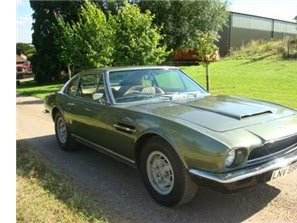 This February 1972 car was in the factory when David Brown sold the company and is one of the very last cars that can legitimately be called a David Brown Aston. This is one of only 70 or so manual cars out of a production run of 402 in total. Originally painted Ascot Grey the car was little used for the early part of its life with less than 1,000 miles between services. The car was put into storage for a number of years then used briefly before being sold with just 29,000 miles on the clock. Due to pickling of the paint, the car was resprayed by Spraytec after being taken back to bare metal and locally made good by Bodylines. A decision was made to change the colour as the original grey was not very flattering to the car. Whilst being painted the engine was rebuilt to unleaded 580 specification with larger valves, ported and polished cylinder heads. The injection system was refurbished and the car tuned on a rolling road by Wren and Andy Chapman. The interior trim on this car is immaculate and original with a nice subtle Pattination. The boot area has been trimmed and has its original tool kit and jack. Recent work includes painting of the underside and arches, detailing of the engine bay and polishing of the wheels as well as new chrome, a wood rim wheel by David Keeling and reconditioned air conditioning by Motoclimate. This car is probably one of the best DBS V8's available and is stunning in all respects and very original down to its 8 track radio and glove box manual.
This February 1972 car was in the factory when David Brown sold the company and is one of the very last cars that can legitimately be called a David Brown Aston. This is one of only 70 or so manual cars out of a production run of 402 in total. Originally painted Ascot Grey the car was little used for the early part of its life with less than 1,000 miles between services. The car was put into storage for a number of years then used briefly before being sold with just 29,000 miles on the clock. Due to pickling of the paint, the car was resprayed by Spraytec after being taken back to bare metal and locally made good by Bodylines. A decision was made to change the colour as the original grey was not very flattering to the car. Whilst being painted the engine was rebuilt to unleaded 580 specification with larger valves, ported and polished cylinder heads. The injection system was refurbished and the car tuned on a rolling road by Wren and Andy Chapman. The interior trim on this car is immaculate and original with a nice subtle Pattination. The boot area has been trimmed and has its original tool kit and jack. Recent work includes painting of the underside and arches, detailing of the engine bay and polishing of the wheels as well as new chrome, a wood rim wheel by David Keeling and reconditioned air conditioning by Motoclimate. This car is probably one of the best DBS V8's available and is stunning in all respects and very original down to its 8 track radio and glove box manual.
Labels: Aston Martin, engine, Wallpapers, wheel
 Being auctioned here is a 1971-made V8-engined DBS coupe, one of only 402 produced by postwar Aston Martin at their Newport Pagnell works 1969-1972, this one with automatic transmission. The right-hand drive two-door is finished in red with four-seater interior in brown leather. The 69,045 mileage displayed when entered is believed by the vendor to be the genuine total for the GT from new and the MOT certificate on file will be valid until August. Although certainly in need of some restoration as well as some TLC and new carpets, the Aston is claimed to be complete and the guide price has been attractively set.
Being auctioned here is a 1971-made V8-engined DBS coupe, one of only 402 produced by postwar Aston Martin at their Newport Pagnell works 1969-1972, this one with automatic transmission. The right-hand drive two-door is finished in red with four-seater interior in brown leather. The 69,045 mileage displayed when entered is believed by the vendor to be the genuine total for the GT from new and the MOT certificate on file will be valid until August. Although certainly in need of some restoration as well as some TLC and new carpets, the Aston is claimed to be complete and the guide price has been attractively set.
Labels: Aston Martin, auto, Car Prices, coupe, engine, sebring, Wallpapers
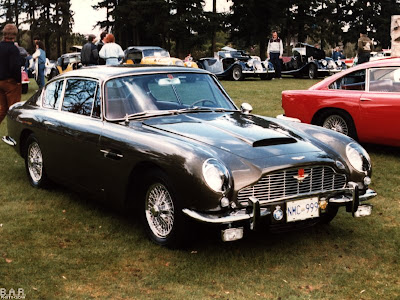 Robert Bamford and Lionel Martin created the Aston Martin Company in 1913 for the sole purpose of racing. They built a car which sat atop an Isotta-Fraschini chassis. The name of the company was in honor to the Aston Clinton Hillclimb race combined with Lionel Martin's surname. After World War One they created their own cars which quickly gained a reputation for reliability and speed by setting many speed records. In 1924 the company was taken over by new ownership, which began a series of ownership changes for the company that lasted for many years. After World War Two, the company was in financial distress and production was slow to resume. David Brown purchased the company in 1947, also purchased the Lagonda automobile company. Though his financial support brought the company back into existence, it was his charismatic designs that are responsible for its longevity and success. The DB series, David Browns initials, first appearing in 1957 are some of the most memorable and skillfully crafted designs of all time. They offered superior handling and power than most of their competitors. The aluminum body panels of the DB4 were part of the reason they were given the 'supperleggera' name, meaning superlight. The DB6 was produced for a short period of time, lasting from 1965 through 1970 with only 1327 examples being created. They are the climax of David Brown's expression of a gentleman's ultimate touring motor car. The DB6 was given styling cues from the DB4GT and DB5 but sat atop a chassis that had been extended by 3.75 inches to give extra room for the rear passengers. The DB5's followed the success of the DB4's and featured similar body work as the 2 door, 4 seater Saloon. Under the hood of the DB5 was a six-cylinder engine of 3995 cc displacement and capable of producing over 280 horsepower. The Vantage option increased the output rating to 314 bhp. Most of the DB5s featured a new ZF five-speed transmission. Unlike the DB4's, the DB5's were equipped with Electric windows and Selectaride type Armstrong Dampers. These were luxuries, but they also increased the weight of the vehicle and decreasing the overall performance. The zero-to-sixty time was 8.1 seconds with the top speed being in the neighborhood of 143 mph. Instead of using a gracefully rounded DB5 tail, the DB6 now featured a rear spoiler. 1966 was the final year for Carrozzeria bodied Aston Martins. Instead of utilizing assembly lines, the Aston Martins were hand built. The specialized process of creating a vehicle took around 2900 man-hours, thus the low production figures. A 4 liter six-cylinder engine could be found under the hood. The Vantage option included three twin-choke Weber 45DCOE9 carburetors and produced 325 horsepower. Top speed was just under 150 mph while zero-to-sixty took just 6.2 seconds. A five speed manual gearbox was standard as was the limited slip differential. The vehicle was suspended by an independent front suspension with coil springs and shocks. Stopping power was provided by disc brakes located on all four wheels. The interior continued the appeal of sophistication with Connolly leather and Wilton wool seats. The DB6 was the final phase of evolution for the DB series. It is the pinnacle of style and performance and encompasses both form and function. The lightweight body, aggressive stance, potent engine, and perfectly tuned suspension continued the Aston Martin racing heritage without sacrificing care or comfort. It is the ultimate gentleman's sport car.
Robert Bamford and Lionel Martin created the Aston Martin Company in 1913 for the sole purpose of racing. They built a car which sat atop an Isotta-Fraschini chassis. The name of the company was in honor to the Aston Clinton Hillclimb race combined with Lionel Martin's surname. After World War One they created their own cars which quickly gained a reputation for reliability and speed by setting many speed records. In 1924 the company was taken over by new ownership, which began a series of ownership changes for the company that lasted for many years. After World War Two, the company was in financial distress and production was slow to resume. David Brown purchased the company in 1947, also purchased the Lagonda automobile company. Though his financial support brought the company back into existence, it was his charismatic designs that are responsible for its longevity and success. The DB series, David Browns initials, first appearing in 1957 are some of the most memorable and skillfully crafted designs of all time. They offered superior handling and power than most of their competitors. The aluminum body panels of the DB4 were part of the reason they were given the 'supperleggera' name, meaning superlight. The DB6 was produced for a short period of time, lasting from 1965 through 1970 with only 1327 examples being created. They are the climax of David Brown's expression of a gentleman's ultimate touring motor car. The DB6 was given styling cues from the DB4GT and DB5 but sat atop a chassis that had been extended by 3.75 inches to give extra room for the rear passengers. The DB5's followed the success of the DB4's and featured similar body work as the 2 door, 4 seater Saloon. Under the hood of the DB5 was a six-cylinder engine of 3995 cc displacement and capable of producing over 280 horsepower. The Vantage option increased the output rating to 314 bhp. Most of the DB5s featured a new ZF five-speed transmission. Unlike the DB4's, the DB5's were equipped with Electric windows and Selectaride type Armstrong Dampers. These were luxuries, but they also increased the weight of the vehicle and decreasing the overall performance. The zero-to-sixty time was 8.1 seconds with the top speed being in the neighborhood of 143 mph. Instead of using a gracefully rounded DB5 tail, the DB6 now featured a rear spoiler. 1966 was the final year for Carrozzeria bodied Aston Martins. Instead of utilizing assembly lines, the Aston Martins were hand built. The specialized process of creating a vehicle took around 2900 man-hours, thus the low production figures. A 4 liter six-cylinder engine could be found under the hood. The Vantage option included three twin-choke Weber 45DCOE9 carburetors and produced 325 horsepower. Top speed was just under 150 mph while zero-to-sixty took just 6.2 seconds. A five speed manual gearbox was standard as was the limited slip differential. The vehicle was suspended by an independent front suspension with coil springs and shocks. Stopping power was provided by disc brakes located on all four wheels. The interior continued the appeal of sophistication with Connolly leather and Wilton wool seats. The DB6 was the final phase of evolution for the DB series. It is the pinnacle of style and performance and encompasses both form and function. The lightweight body, aggressive stance, potent engine, and perfectly tuned suspension continued the Aston Martin racing heritage without sacrificing care or comfort. It is the ultimate gentleman's sport car.
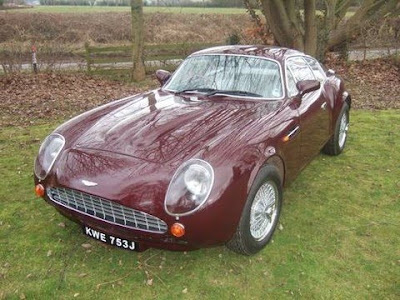 Aston DB7 engine and running gear. 5-speed manual gearbox. GRP bodywork using a mould taken from a genuine Zagato. Registered as a 1971 Aston Martin and tax exempt. Totally unique and very fast! Price: £85,000.
Aston DB7 engine and running gear. 5-speed manual gearbox. GRP bodywork using a mould taken from a genuine Zagato. Registered as a 1971 Aston Martin and tax exempt. Totally unique and very fast! Price: £85,000.
Labels: Aston Martin, Car Prices, engine, speed, Wallpapers, zagato
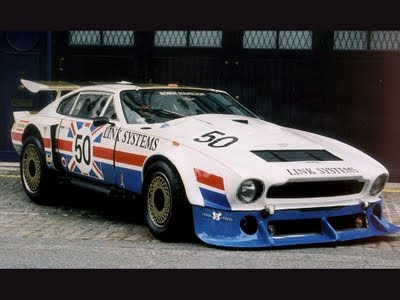 developed by Aston Martin specialist Robin Hamilton, this car first raced in club events in 1974. In 1977, it finished in 17th place at LeMans. It appeared there again in 1979 and gained its nickname of 'The Muncher' when it melted a piston and had to retire. It appeared in the Six Hour race at Silverstone in 1979 and again in 1980 driven by Derek Bell and David Preece. It is shown here, at the 2007 Pebble Beach Concours d'Elegance, as it last raced in 1980 when it set a World Land Speed Record for towing a trailer-caravan at 152 mph. Although not a factory race car, Aston Martin assisted in the car's development.
developed by Aston Martin specialist Robin Hamilton, this car first raced in club events in 1974. In 1977, it finished in 17th place at LeMans. It appeared there again in 1979 and gained its nickname of 'The Muncher' when it melted a piston and had to retire. It appeared in the Six Hour race at Silverstone in 1979 and again in 1980 driven by Derek Bell and David Preece. It is shown here, at the 2007 Pebble Beach Concours d'Elegance, as it last raced in 1980 when it set a World Land Speed Record for towing a trailer-caravan at 152 mph. Although not a factory race car, Aston Martin assisted in the car's development.
Labels: Aston Martin, speed, Wallpapers
Labels: Aston Martin, Wallpapers
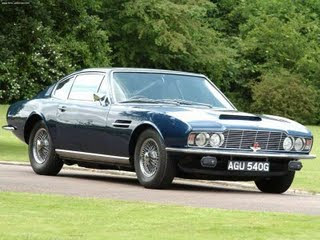 Unveiled at Blenheim Palace on September 25, 1967, the William Towns designed Aston Martin DBS was originally only intended for limited production. In its original guise the Aston Martin DBS retained the six-cylinder, 3,995 cc engine employed in the Aston Martin DB6. However, after an announcement on 27 September, 1969 the Aston Martin DBS was also made available with a V8 engine, with the car being known as the DBSV8 - a four-seat grand touring car, capable of 160 mph. Besides the engine differences, notable visual differences between the two variants included, on the DBSV8, the use of specially designed 15'' light weight alloy wheels with ventilated brake discs for the first time on an Aston Martin production car (as opposed to the distinctive wire wheels employed on the Aston Martin DBS). A distinguishing feature of both the Aston Martin DBS and DBSV8 are the four quartz iodine headlights set into an alternative version of the iconic Aston Martin grille. The Aston Martin DBS and the DBSV8 were produced concurrently until May 1972.
Unveiled at Blenheim Palace on September 25, 1967, the William Towns designed Aston Martin DBS was originally only intended for limited production. In its original guise the Aston Martin DBS retained the six-cylinder, 3,995 cc engine employed in the Aston Martin DB6. However, after an announcement on 27 September, 1969 the Aston Martin DBS was also made available with a V8 engine, with the car being known as the DBSV8 - a four-seat grand touring car, capable of 160 mph. Besides the engine differences, notable visual differences between the two variants included, on the DBSV8, the use of specially designed 15'' light weight alloy wheels with ventilated brake discs for the first time on an Aston Martin production car (as opposed to the distinctive wire wheels employed on the Aston Martin DBS). A distinguishing feature of both the Aston Martin DBS and DBSV8 are the four quartz iodine headlights set into an alternative version of the iconic Aston Martin grille. The Aston Martin DBS and the DBSV8 were produced concurrently until May 1972.
Labels: Aston Martin, engine, Wallpapers, wheel
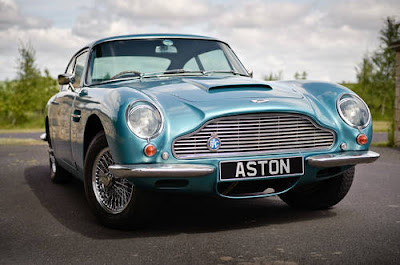 Robert Bamford and Lionel Martin created the Aston Martin Company in 1913 for the sole purpose of racing. They built a car which sat atop an Isotta-Fraschini chassis. The name of the company was in honor to the Aston Clinton Hillclimb race combined with Lionel Martin's surname. After World War One they created their own cars which quickly gained a reputation for reliability and speed by setting many speed records. In 1924 the company was taken over by new ownership, which began a series of ownership changes for the company that lasted for many years. After World War Two, the company was in financial distress and production was slow to resume. David Brown purchased the company in 1947, also purchased the Lagonda automobile company. Though his financial support brought the company back into existence, it was his charismatic designs that are responsible for its longevity and success. The DB series, David Browns initials, first appearing in 1957 are some of the most memorable and skillfully crafted designs of all time. They offered superior handling and power than most of their competitors. The aluminum body panels of the DB4 were part of the reason they were given the 'supperleggera' name, meaning superlight. The DB6 was produced for a short period of time, lasting from 1965 through 1970 with only 1327 examples being created. They are the climax of David Brown's expression of a gentleman's ultimate touring motor car.
Robert Bamford and Lionel Martin created the Aston Martin Company in 1913 for the sole purpose of racing. They built a car which sat atop an Isotta-Fraschini chassis. The name of the company was in honor to the Aston Clinton Hillclimb race combined with Lionel Martin's surname. After World War One they created their own cars which quickly gained a reputation for reliability and speed by setting many speed records. In 1924 the company was taken over by new ownership, which began a series of ownership changes for the company that lasted for many years. After World War Two, the company was in financial distress and production was slow to resume. David Brown purchased the company in 1947, also purchased the Lagonda automobile company. Though his financial support brought the company back into existence, it was his charismatic designs that are responsible for its longevity and success. The DB series, David Browns initials, first appearing in 1957 are some of the most memorable and skillfully crafted designs of all time. They offered superior handling and power than most of their competitors. The aluminum body panels of the DB4 were part of the reason they were given the 'supperleggera' name, meaning superlight. The DB6 was produced for a short period of time, lasting from 1965 through 1970 with only 1327 examples being created. They are the climax of David Brown's expression of a gentleman's ultimate touring motor car.
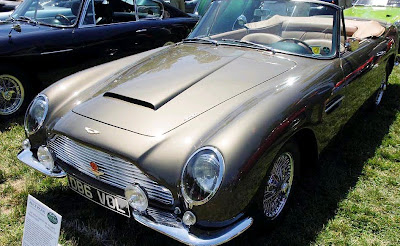 The new Aston Martin DB6 was introduced at the 1965 London Motor Show as a distinctively restyled development of the successful DB4 and DB5 model ranges. The flat transom Kamm-tail topped by an integral spoiler attracted much comment, and although the new bodyshell was only 17 pounds heavier than its predecessor, the DB6 gives the impression of being a far more substantial, deep-chested motor car. It certainly succeeded in offering increased leg and head room in both the front and rear seats. Quarter lights, last seen on Aston Martin in the DB2/4s, reappeared on the DB6. The DB6s were powered by the successful twin-cam, 4-liter, six-cylinder engine, already proven in the racing DBR2s and production DB5 series, while Selectaride damper control was now standard equipment. As further departures from tradition, a Power-Lok limited-slip differential, chrome plated or painted wheels, whitewall tires and two- or three-eared hub nuts all became options within the standard price of £4,998 ($13,995). The Volante, Aston’s term for its convertible models, was also introduced at the 1965 London Motor Show, the first batch of 37 cars being built on the last of the DB5 chassis frames with an 8-foot, 2-inch wheelbase. The grown up DB6 MKI Volante then made its debut at the 1966 London Motor Show, its specification matching that of the DB6 saloon save for the power-operated hood and an all-up weight of 3,223 pounds, slightly less than that of the saloon. A total of 140 were made. This particular Aston Martin DB6 was delivered to New York in April 1967, via agent Chinetti. Originally fitted with an automatic transmission, it was updated early in its life (maybe even at the factory) with the correct type ZF five-speed manual gearbox. The car spent most of its life in the United States, until it was sold to Switzerland in 1989 for $225,000. The current owner purchased the car in 1997. Painted in the highly attractive original color of olive green, this Aston Martin still retains its original tan leather interior. The carpets in the passenger compartment and the boot have recently been renewed with Wilton wool carpets. The original tan Everflex power top is still fitted and although in good order is now starting to show some signs of wear. The car has power steering, power windows and chrome wire wheels. New tires have recently been fitted. 103,090 miles shows on the odometer and this is believed to be genuine mileage from new. Offered in good running condition, this rare car warrants close inspection.
The new Aston Martin DB6 was introduced at the 1965 London Motor Show as a distinctively restyled development of the successful DB4 and DB5 model ranges. The flat transom Kamm-tail topped by an integral spoiler attracted much comment, and although the new bodyshell was only 17 pounds heavier than its predecessor, the DB6 gives the impression of being a far more substantial, deep-chested motor car. It certainly succeeded in offering increased leg and head room in both the front and rear seats. Quarter lights, last seen on Aston Martin in the DB2/4s, reappeared on the DB6. The DB6s were powered by the successful twin-cam, 4-liter, six-cylinder engine, already proven in the racing DBR2s and production DB5 series, while Selectaride damper control was now standard equipment. As further departures from tradition, a Power-Lok limited-slip differential, chrome plated or painted wheels, whitewall tires and two- or three-eared hub nuts all became options within the standard price of £4,998 ($13,995). The Volante, Aston’s term for its convertible models, was also introduced at the 1965 London Motor Show, the first batch of 37 cars being built on the last of the DB5 chassis frames with an 8-foot, 2-inch wheelbase. The grown up DB6 MKI Volante then made its debut at the 1966 London Motor Show, its specification matching that of the DB6 saloon save for the power-operated hood and an all-up weight of 3,223 pounds, slightly less than that of the saloon. A total of 140 were made. This particular Aston Martin DB6 was delivered to New York in April 1967, via agent Chinetti. Originally fitted with an automatic transmission, it was updated early in its life (maybe even at the factory) with the correct type ZF five-speed manual gearbox. The car spent most of its life in the United States, until it was sold to Switzerland in 1989 for $225,000. The current owner purchased the car in 1997. Painted in the highly attractive original color of olive green, this Aston Martin still retains its original tan leather interior. The carpets in the passenger compartment and the boot have recently been renewed with Wilton wool carpets. The original tan Everflex power top is still fitted and although in good order is now starting to show some signs of wear. The car has power steering, power windows and chrome wire wheels. New tires have recently been fitted. 103,090 miles shows on the odometer and this is believed to be genuine mileage from new. Offered in good running condition, this rare car warrants close inspection.
Labels: Aston Martin, auto, Auto show, Car Prices, convertible, engine, motor, motor show, racing, Series, speed, wheel
Labels: Aston Martin, Wallpapers
Thursday, August 20, 2009
Labels: Pitcures of Cars, Wallpapers
Wednesday, August 19, 2009
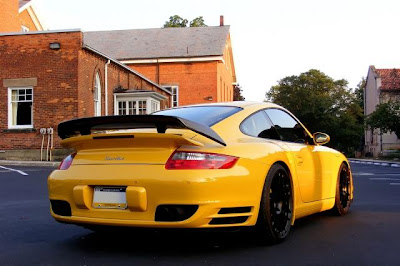
Labels: Porsche Cars, vantage, Wallpapers
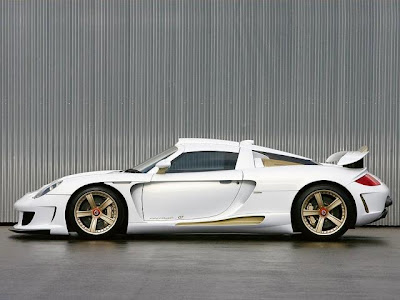
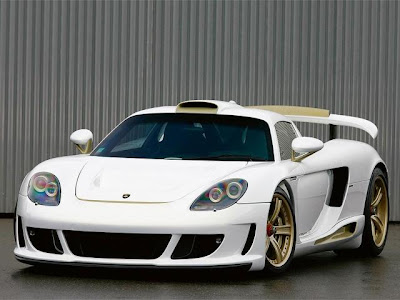 Gemballa Automobiltechnik specialists have added a new exotic addition to their range of Porsche models called the Mirage GT Gold Edition. Based on the Porsche 980 Carrera GT, the car is sure to catch your eye with its Gemballa body details finished in golden paint and golden carbon fiber. Performance is also enhanced with ultra-light aerodynamics components, a power engine boasting 670 hp and a top speed of 335 km/h, and an ability to accelerate from zero to 100 km/h in 3.7 seconds. For perfect road handling, Gemballa installed a groundbreaking, hydraulic, height-adjustable coilover kit especially adjusted to the Gemballa wheel-tire combination GT Sport Forged. The interior is stylishly arranged from the floor to the roof lining with carbon fiber and elements painted in golden color.
Gemballa Automobiltechnik specialists have added a new exotic addition to their range of Porsche models called the Mirage GT Gold Edition. Based on the Porsche 980 Carrera GT, the car is sure to catch your eye with its Gemballa body details finished in golden paint and golden carbon fiber. Performance is also enhanced with ultra-light aerodynamics components, a power engine boasting 670 hp and a top speed of 335 km/h, and an ability to accelerate from zero to 100 km/h in 3.7 seconds. For perfect road handling, Gemballa installed a groundbreaking, hydraulic, height-adjustable coilover kit especially adjusted to the Gemballa wheel-tire combination GT Sport Forged. The interior is stylishly arranged from the floor to the roof lining with carbon fiber and elements painted in golden color.
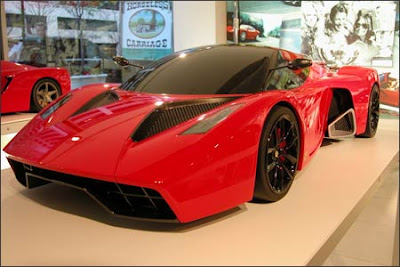 The buff book’s sources report Ferrari is looking to see the Ferrari Millechili hit the streets as a 2010 model.One approach is reportedly being based on the Millechili concept, which as you’ll recall was essentially a chopped-down Enzo crafted out of cardboard and plastic holding the promise of environmentally-friendly specs. The production vehicle is tipped to be based on the F430’s platform remember that the 288 GTO and F40 were based on modified 308 underpinnings – but feature a 600hp V10 in a lightweight 1000kg package, with a lengthened wheelbase of around 104 inces, a $500,000 price tag and a production run of 300.
The buff book’s sources report Ferrari is looking to see the Ferrari Millechili hit the streets as a 2010 model.One approach is reportedly being based on the Millechili concept, which as you’ll recall was essentially a chopped-down Enzo crafted out of cardboard and plastic holding the promise of environmentally-friendly specs. The production vehicle is tipped to be based on the F430’s platform remember that the 288 GTO and F40 were based on modified 308 underpinnings – but feature a 600hp V10 in a lightweight 1000kg package, with a lengthened wheelbase of around 104 inces, a $500,000 price tag and a production run of 300.
Labels: Car Prices, Concept Cars, Ferrari Cars, Wallpapers, wheel
Tuesday, August 18, 2009
 The DB7 Vantage, available in both Coupe and Volante body styles, is the first ever Aston Martin to be powered by a 12 cylinder engine the new 420 horsepower, 48 valve, all-alloy V12 engine delivers 400lbs ft of torque and is the first of a totally new generation of advanced technology.
The DB7 Vantage, available in both Coupe and Volante body styles, is the first ever Aston Martin to be powered by a 12 cylinder engine the new 420 horsepower, 48 valve, all-alloy V12 engine delivers 400lbs ft of torque and is the first of a totally new generation of advanced technology.
Labels: Advanced fast cars, Aston Martin, coupe, engine, sebring, vantage, Wallpapers
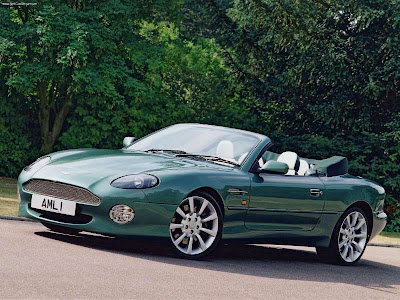 More than 500,000 test miles were covered in temperatures ranging from -30°C to +45°C in Europe and North America including an accelerated high speed durability test of 48 hours continuous running at 165mph (266km/h) in Southern Europe in mid-summer temperatures.
More than 500,000 test miles were covered in temperatures ranging from -30°C to +45°C in Europe and North America including an accelerated high speed durability test of 48 hours continuous running at 165mph (266km/h) in Southern Europe in mid-summer temperatures.
Labels: Aston Martin, speed, vantage, Wallpapers
Monday, August 17, 2009
Labels: Chevrolet, Wallpapers
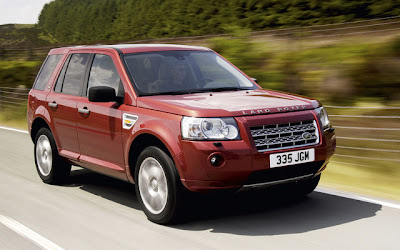
The 2009 LR2 is a 4-door, 5-passenger luxury sport-utility, available in one trim only, the HSE. Most vehicle manufacturers recommend changing the oil once a year or every 7,500 miles in passenger car and light truck gasoline engines. Keep your new or old car running smoothly.People that viewed the 2009 Land Rover LR2 also viewed these cars
Labels: engine, Land Rover, luxury cars pics, Wallpapers
Wednesday, August 12, 2009
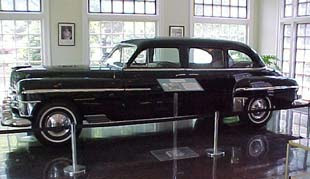 It was available in two body styles a limousine or eight-passenger sedan. “The limousine is designed for those who prefer a chauffeur-driven car” and featured a power-operated glass partition between the front and rear compartments, power windows and two fold-down seats in the rear compartment.
It was available in two body styles a limousine or eight-passenger sedan. “The limousine is designed for those who prefer a chauffeur-driven car” and featured a power-operated glass partition between the front and rear compartments, power windows and two fold-down seats in the rear compartment.
Labels: Chrysler, roadster, Wallpapers
Tuesday, August 11, 2009
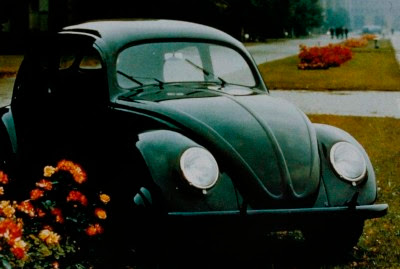 Nazi leader Adolf Hitler named the Volkswagen KdF-Wagen after a German Labor Front motto meaning Strength Through Joy.1944-1945 Volkswagen Beetle
Nazi leader Adolf Hitler named the Volkswagen KdF-Wagen after a German Labor Front motto meaning Strength Through Joy.1944-1945 Volkswagen Beetle
Labels: Wallpapers
Labels: Wallpapers
Monday, August 10, 2009
 The frontal trapezoid was flipped over for the somewhat more angular '61s, allowing for canted quad headlights, and fins were abruptly shaved off for '62.Pushbutton TorqueFlite automatic mated to wedge-head 413 V-8s throughout, with the '62 engine was detuned 10 horses for economy reasons. Also shared by all these Chryslers was the striking "Astra-Dome" semispherical gauge cluster with then-pioneering indirect lighting.
The frontal trapezoid was flipped over for the somewhat more angular '61s, allowing for canted quad headlights, and fins were abruptly shaved off for '62.Pushbutton TorqueFlite automatic mated to wedge-head 413 V-8s throughout, with the '62 engine was detuned 10 horses for economy reasons. Also shared by all these Chryslers was the striking "Astra-Dome" semispherical gauge cluster with then-pioneering indirect lighting.
Labels: auto, Chrysler, engine, roadster, Wallpapers
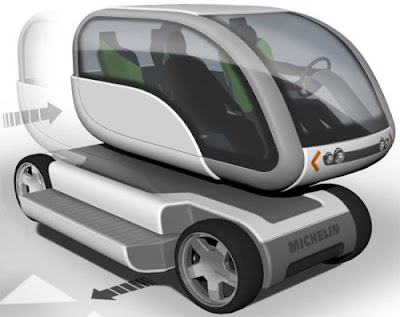 The vehicle looks like a shuttlecraft on wheels. Actually the cabin on top of the car can move around during a crash, which can keep the passengers safely out of the deformation zone .Theoritically the passengers would experience a lot less of the force, or at least the cabin wouldn’t be smashed in.
The vehicle looks like a shuttlecraft on wheels. Actually the cabin on top of the car can move around during a crash, which can keep the passengers safely out of the deformation zone .Theoritically the passengers would experience a lot less of the force, or at least the cabin wouldn’t be smashed in.
Labels: Crash, Wallpapers, wheel
Sunday, August 9, 2009
 A large quantity of Belgian chocolate, which is simply renowned, was used to create this chocolate car. 800 kilograms, 1800 pounds or 28,800 ounces of chocolate which equals to 19,200 bars of Hershey’s 1.5 oz.
A large quantity of Belgian chocolate, which is simply renowned, was used to create this chocolate car. 800 kilograms, 1800 pounds or 28,800 ounces of chocolate which equals to 19,200 bars of Hershey’s 1.5 oz.
Labels: Wallpapers
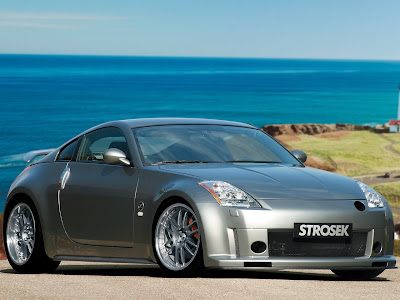
The Nissan 350Z one of the best sports cars under 30 grand and said, "This is a true sports coupe." I'd have to agree, seeing as though the 350Z's VQ engine received the 2007 Ward's 10 Best Engines Award. And due to the fact that I admittedly have a soft spot for sports cars with the Z badge.
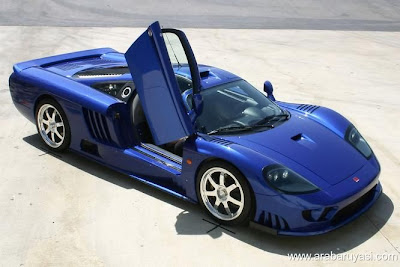 Saleen S7 Twin-Turbo: 248 mph+, 0-60 in 3.2 secs. Twin Turbo All Aluminum V8 Engine with 750 hp, Smooth and bad-ass, will make you want to show it off non-stop.
Saleen S7 Twin-Turbo: 248 mph+, 0-60 in 3.2 secs. Twin Turbo All Aluminum V8 Engine with 750 hp, Smooth and bad-ass, will make you want to show it off non-stop.
Labels: engine, Wallpapers
 Mercedes Benz Pagani Zonda F: 215 mph M180 V12 Engine with 650 hp, . But now the racing edition have replace this.
Mercedes Benz Pagani Zonda F: 215 mph M180 V12 Engine with 650 hp, . But now the racing edition have replace this.
Labels: edition, engine, Mercedes Benz, pagani zonda, racing
BMW S70/2 60 Degree V12 Engine with 627 hp, Check out the doors, they looks like bat wings.
Labels: engine, Wallpapers
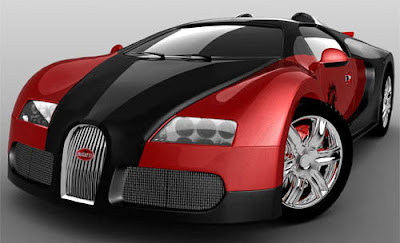 Bugatti Veyron: 253 mph+, 0-60 in 2.5 secs. Aluminum, Narrow Angle W16 Engine with 1001 hp, base .its a beauityfull and attrective car and good color combination.
Bugatti Veyron: 253 mph+, 0-60 in 2.5 secs. Aluminum, Narrow Angle W16 Engine with 1001 hp, base .its a beauityfull and attrective car and good color combination.
Labels: Bugatti Veyron, engine, Wallpapers







